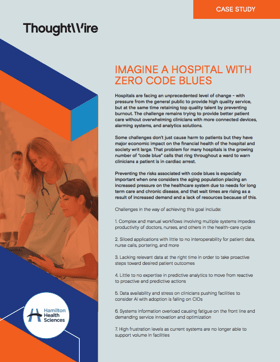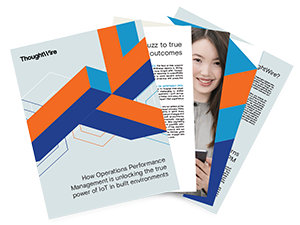At ThoughtWire, we hold empathy as one of our core values. A saying around the office is “Use your people brain, not just your computer brain.”
As part of the Customer Success team, my job isn’t just to resolve tickets. It’s also to listen to our customers when their workflows aren’t giving the results they expected and making sure they feel that their concerns are being heard. Sometimes, it also involves going beyond the ticketing system to take a look at a day in the customer’s shoes. A great example can be found in our healthcare portfolio. After all, when you’ve got patients to look after, your patience for technical problems may wear thin.
Here at ThoughtWire, we have a collection of great minds with frontline experience in healthcare; for example, our Healthcare Solutions Manager Dan Nguyen has worked for years as a registered nurse focused in mental health. There’s a big difference between hearing about things and experiencing it yourself first-hand, though; that’s where on-site visits come in.
A while ago, I was on-site at one of our healthcare customers’ facility to be a quick-response point of contact during the deployment of a software upgrade. In order to affect the fewest number of users, who in this case were primarily nurses, the deployment was being done at one o’clock in the morning. Aside from the beeping of equipment, the hospital was surprisingly quiet.
Part of my job in this deployment was to conduct post-deployment tests and make sure that the existing features had not been broken. For technical reasons, one particular test required the involvement of a nurse. Of course, even at 1AM nurses have a lot of work to do, but it didn’t take too long to find one who had a spare moment.
Just as we were at the nurse’s station starting the test, a Code Blue was triggered in the room next to us. I made myself as small and out of the way as possible while the Code Response team sprang into action to try and save someone’s life, and quietly left as soon as I could do so without blocking anyone’s route to the room.
The test still needed to be done, and I found myself in the obstetrics and maternity wing. Another nurse was willing to help out and be part of the test, and this time it went much more smoothly; within about ten minutes, we were done. During those ten minutes, I could hear someone down the hall repeatedly shouting in pain – I guessed she had been doing so for quite a while – and just before we finished the test, the yelling stopped and I could hear a baby crying for the first time from the same room.
And that was a QUIET night at the hospital.
The point I’m trying to make is when you’re listening to your customers and their concerns, keep in mind that your product probably isn’t the most important part of their day. It may, however, contribute to how easy or difficult the most important part of their day is, and the goal of Customer Success is to make sure that needle swings towards “easier” more often than not.
About the author
Justin Robinson is a Technical Support Specialist on the Customer Success team at ThoughtWire. He is one of the main points of contact for technical support. He's been a part of the company for over 3 years.






